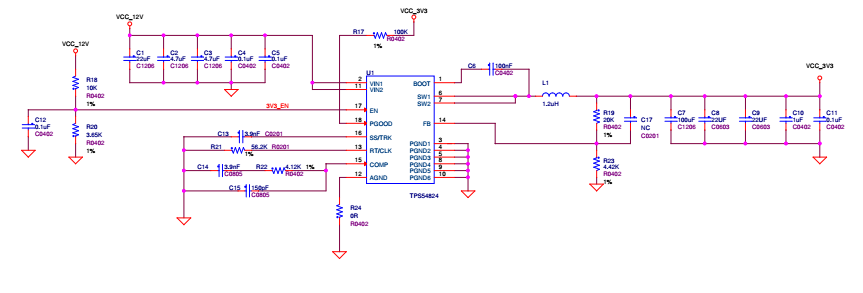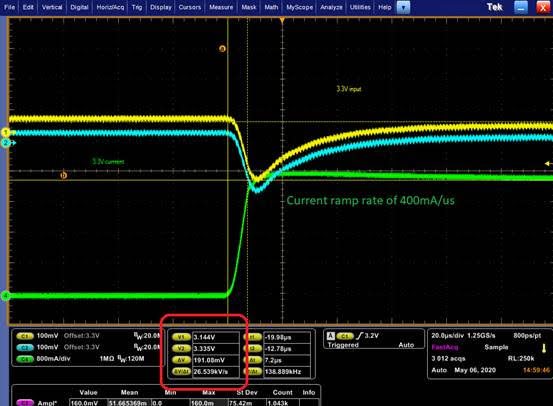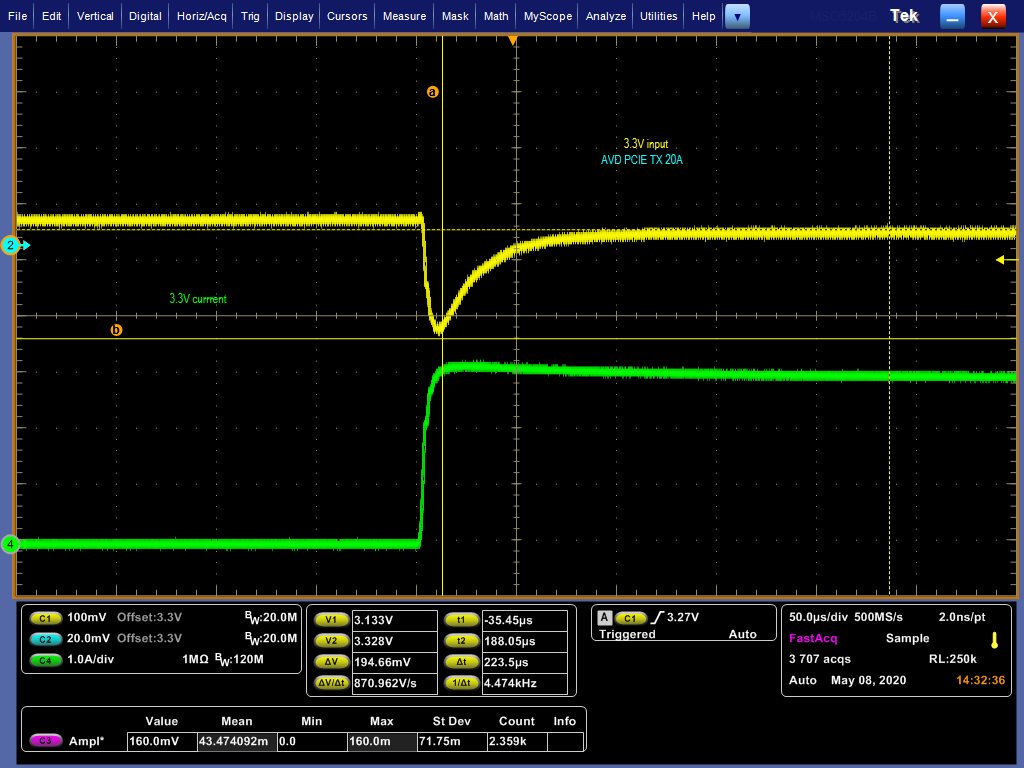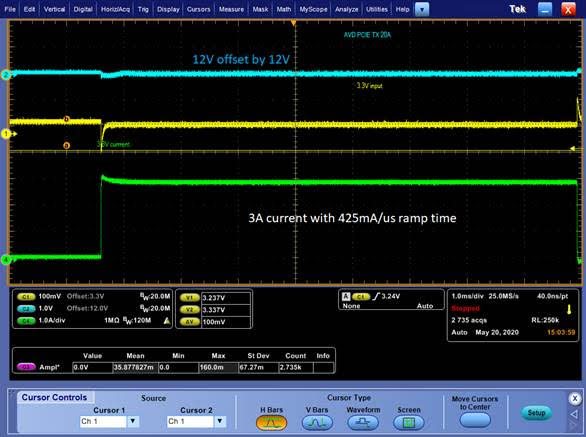Other Parts Discussed in Thread: TINA-TI
While using the TPS54824 in the design, we have found 2 issues:
- When the SSD is being used as a load, the ripple on output 3.3V rail is found to be higher. How can this ripple be reduced?
- When the load higher than 250mA/s is applied, then output 3.3V is found to drop by ~200mV (See the snapshot). How can the drop be reduced.






